Switch language:


SOM Air-to-Surface Cruise Missile
Stand-Off Missile (SOM) is Turkey's first indigenous long-range, autonomous, high-precision air-to-surface cruise missile. It was designed and developed jointly by TUBITAK Defense Industries Research and Development Institute (TUBITAK SAGE) and Roketsan to defend ground- and sea-based targets.
Air-to-surface cruise missile
Contractors
TÜBİTAK SAGE and Roketsan
Turkish Air Force
Weight (Missile)
Weight (warhead).
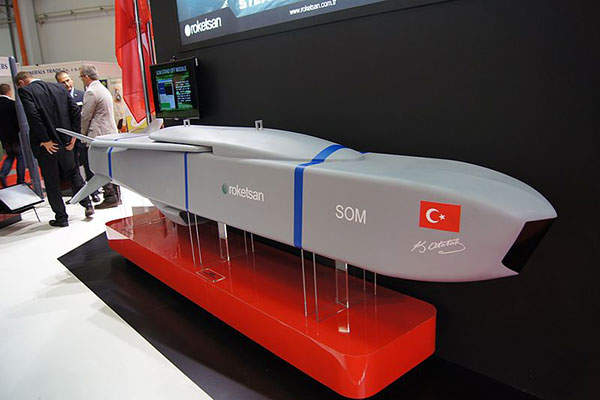
Stand-Off Missile (SOM) is Turkey’s first indigenous long-range, autonomous, high-precision air-to-surface cruise missile. It was designed and developed jointly by TUBITAK Defense Industries Research and Development Institute (TUBITAK SAGE) and Roketsan to defend ground- and sea-based targets.
Recommended White Papers
Angle of Arrival/Direction-Finding Techniques
Advanced geolocation capabilities, recommended buyers guides.
Communications, navigation, and identification (AIR ISR) for the air defence industry
Airforce training and simulation for the air defence industry.
The missile is highly effective against moving land / surface targets, high-value stationary targets, strategic assets, shelters, exposed aircraft, aircraft hangars, and command and control centres, as well as sea surface threats. It has resistance against countermeasures as well as clutter effects.
In October 2014, Roketsan and Lockheed Martin Missiles and Fire Control signed a teaming agreement on the development of a new generation stand-off cruise missile variant, SOM-J for internal carriage on the F-35 Lightning II fifth generation multi-role stealth fighter or external carriage on other aircraft.
The Stand-Off missile was exhibited at the International Defence Exhibition & Conference (IDEX) 2015 held in Abu Dhabi, UAE.
Development of Turkey’s first indigenous stand-off missile
Development of the SOM cruise missile began in 2006. The missile was unveiled at the 2nd Air Force Base located in Çiğli, İzmir in June 2011. It has been in service with the Turkish Air Force since 2012 and is certified for integration onto the F-4E 2020 and F-16 Block 40 fighter aircraft.
It was first test-fired from a McDonnell Douglas F-4E 2020 strike aircraft in August 2011.
The Undersecretariat for Defense Industries under the Ministry of National Defense placed a $25m worth contract with Kale Aero in February 2012 to develop turbojet engines for the SOM weapon system.
Design and features of SOM cruise missile
The SOM cruise missile features a modular design, offers high-lethality and delivers enhanced operational flexibility. It has a low detectable capability and a longer range compared to surface-to-air missiles. It is compatible with the Nato UAI standard.
The missile is capable of performing in-flight re-targeting as well as in-flight mission selection among pre-planned missions. Its rear section is fitted with control fins for providing lifting and improved manoeuvrability.
Suspension lugs fitted to the missile provide mechanical interface between the missile and the launch aircraft. The weapon system also incorporates a power system, fuel tank, air inlet, wing deployment system, and a missile computer.
The missile system weighs 600kg and is equipped with a 230kg blast fragmentation and dual stage tandem penetration warhead. It features selectable impact parameters.
Guidance and navigation
SOM is equipped with an imaging infrared (IIR) seeker and an inertial measurement unit (IMU) for high-precision guidance. The IIR seeker incorporates a high-resolution imaging system and allows detection of predefined targets with long ranges, high-agility, and resistance to electronic countermeasures / clutter.
The cruise missile is navigated using global positioning system (GPS), inertial navigation system (INS), terrain referenced navigation (TRN), image-based navigation (IBN), and automatic target recognition (ATR) sensors. It also incorporates a radar and barometric altimeter for determining the flight altitude, and has the ability to follow waypoints and terrain contours.
Propulsion and performance of SOM missile
The Stand-Off missile is powered by a turbojet engine and has a range of more than 180km. It is operable under all weather conditions, and also in hostile environments.
Details of the SOM-J variant
The advanced SOM-J variant will be jointly developed, produced, marketed, and sold by Lockheed Martin and Roketsan. The first stage of SOM-J is scheduled for completion in 2018.
The variant is intended to provide exceptional anti-surface warfare capabilities to the F-35 Lightning II Joint Strike Fighter and other similar aircraft.
Related Projects
More Projects
X-65 CRANE Demonstrator Aircraft, US
National advanced surface to air missile system, norway, aim-9x sidewinder air-to-air missile, usa, airbus h125 helicopter, france, sign up for our daily news round-up.
Give your business an edge with our leading industry insights.
Sign up to the newsletter
Your corporate email address.
Airforce Technology In Brief
Global Defence Technology
Thematic Take
I consent to Verdict Media Limited collecting my details provided via this form in accordance with Privacy Policy
Thank you for subscribing
View all newsletters from across the GlobalData Media network.
Azerbaijan Parades New SOM-B1 Cruise Missile
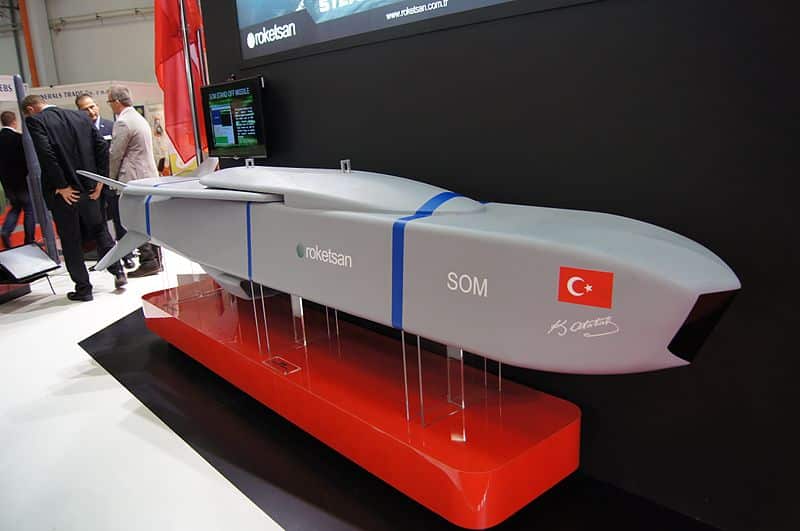
On June 26, the Azerbaijani Air and Air Defense Force displayed its recently acquired SOM-B1 long-range, high-precision, air-to-surface cruise missile, indigenously manufactured in Turkey. The SOM-B1 is designed for use against high-value, heavily defended targets with a range of over 250 kilometers and is equipped with a conventional 227-kilogram high explosive blast fragmentation warhead. SOM (stand-off missile) series missiles are designed for use from F-4 and F-16 platforms and are propelled by turbojet engines.
The SOM-B1 exhibition occurred as part of a military parade celebrating the 100th anniversary of the establishment of the country’s armed forces. Azerbaijani President Ilham Aliyev delivered a speech at the event indicating he sees force as the only way forward in solving Azerbaijan’s decades long conflict with Armenia over the disputed Nagorno-Karabakh territory. He added his country will continue its intensive military buildup, which has seen Azerbaijan’s military spending increase 1500% since 2003.
Related Links:
Azerbaijan displays Turkish cruise missile in military parade in ‘historic first’ , Hurriyet Daily News Azerbaijan received Turkish high precision cruise missiles , Defense Blog Azerbaijan has bought SOM missile from Turkey , Azeri Defense Ilham Aliyev makes speech at military parade – UPDATED, PHOTOS , Azerbaijani Vision SOM Stand Off Missile , Roketsan
Indonesia’s Harimau Tank Commissioned: Revolutionizing Modern Warfare

TAM 2C: Argentina’s Next-Gen Medium Tank Upgrade!

SAMI 155mm Self-Propelled Howitzer: Saudi Arabia’s Artillery Innovation

Sea Viper With Value Upgrade Package – Enhances Fleet’s Air Defense

Alsace Enters The Red Sea – Watch The Weapon Configuration Of…
- Missiles & Bombs
Turkey SOM Missile – Next-generation Air-launched Cruise Missile
SOM stands for Stand-Off Missile. It has different model variants, SOM-A, SOM-B1, SOM-B2, SOM-J, each for a different purpose
High accuracy, great efficiency, reasonable price, suitable for the budget of many countries, cruise missiles are increasingly popular in most wars and conflicts around the world. As for air-launched cruise missiles, SOM is a notable next-generation weapon developed by Türkiye’s TÜBİTAK SAGE. Designed to engage targets on land or sea, SOM provides the capability of destroying designated military targets with high accuracy with the launching aircraft remaining outside the effective range of hostile air defence systems.
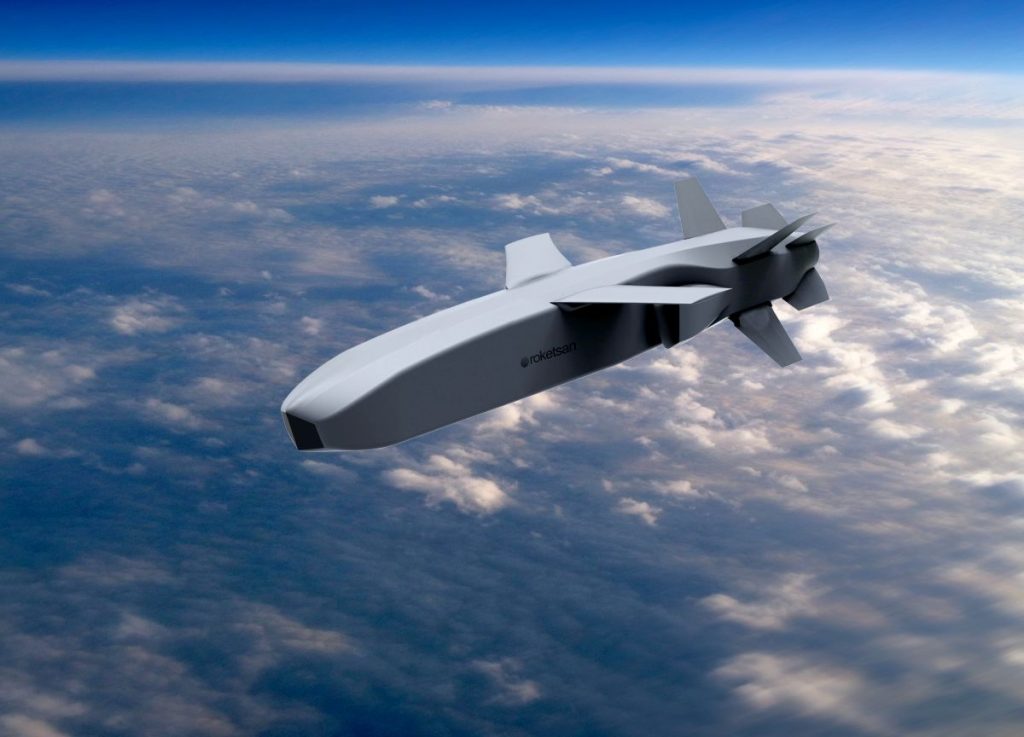
SOM stands for Stand-Off Missile. It has different model variants, SOM-A, SOM-B1, SOM-B2, SOM-J, each for a different purpose, ranging from simple air to ground missions, some for naval targets, some for moving objects and some again for especially hard targets with penetrating systems. Developed since 2006, the SOM is Turkey’s first domestic guided missile for striking both stationary and moving targets at a stand-off distance of over 180 kilometers.
The basic design of the missile includes a fuselage designed specifically to fit in the internal weapons bays of the F-35 Lightning II. The missile uses GPS as its primary mode of guidance complemented by an advanced Inertial Navigation System and a radar-based Terrain Referenced Navigation system, allowing the missile to skim the terrain during its flight in order to evade local defence systems. According to the developer, it features advanced geometry and aerodynamics over similar missile systems, as well as lightweight composite components that minimize the radar cross-section of the missile.
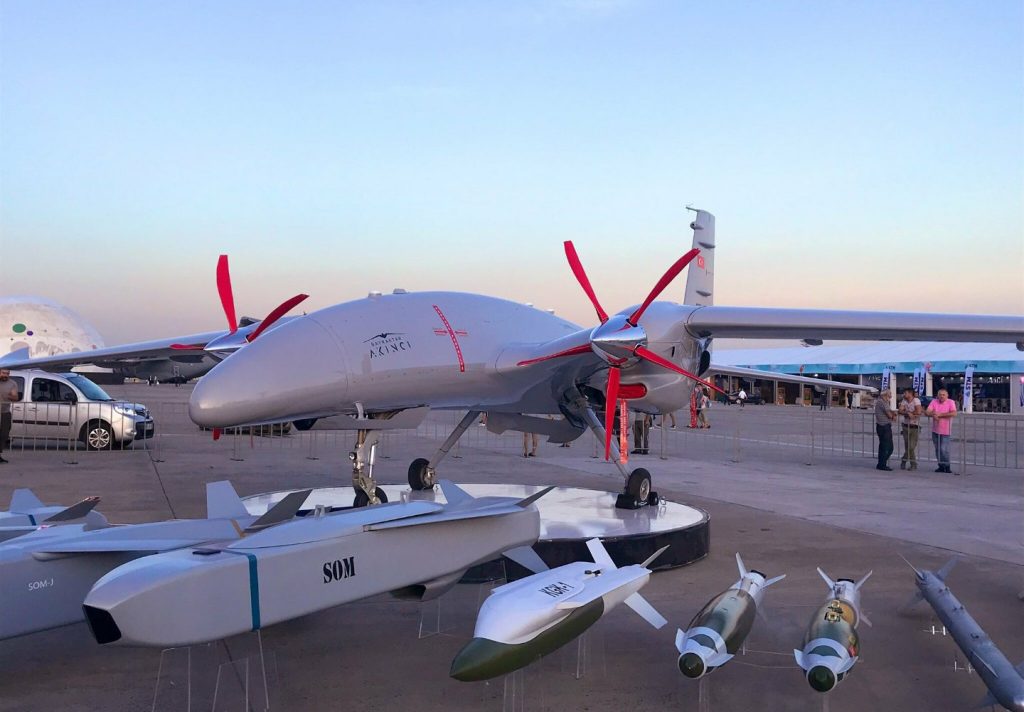
A terminal stage infrared imager detects the individual target by matching its signature with a pre-loaded database of similar targets allowing for precision strike. It can also be used to provide image-based midcourse navigation by taking snapshots of waypoints and comparing them against predicted position to update the navigation system. Thus, if GPS capability is denied or degraded, the missile can follow its waypoints using infrared based terrain updates.
The missile includes a two-way datalink that makes possible to change the task in flight. Its rear section is fitted with control fins for providing lifting and improved manoeuvrability. The standard missile system weighs 600kg and is equipped with a 230kg blast fragmentation and dual stage tandem penetration warhead. It is powered by a turbojet engine and has a range of more than 180km. It is operable under all weather conditions, and also in hostile environments.
The latest variant is the SOM-J, which is intended to provide a unique anti-surface warfare capability the 5th generation fighters, was developed in partnership with TÜBİTAK SAGE and Roketsan. With a range of 275 km, SOM-J can be used by F-35 and F-16 jets and can operate in all weather conditions. Work continues on integrating the SOM-J missile into AKINCI and AKSUNGUR unmanned combat aerial vehicles. SOM-J will also be among the weapons that can be carried in the internal weapons bay of Turkey’s 5th Generation fighter aircraft, the National Combat Aircraft (MMU). All tests of the SOM family variants have been completed and mass production preparations are currently ongoing.
RELATED ARTICLES MORE FROM AUTHOR
Alsace enters the red sea – watch the weapon configuration of french frigate.

China SH11 – 155mm SPH For Shoot And Scoot Role

Uragan-1M Entered The War – Russia’s Answer To HIMARS Attacks

China HHQ-10 – Similar To The US RAM RIM-116, The Final Shield Of Warships

China Type 054B – PLA Navy Next-Gen Frigate

Bushmaster 25mm – Weapons Make Up Bradley’s Strength

Ukraine’s Su-24 – More Powerful With AASM Hammer 1000 And SCALP-EG
Russian su-30k – ethiopia is the latest customer.

T-90M Proryv was defeated by M2 Bradleys – Revealing Fatal Weakness
Leave a reply cancel reply.
Save my name, email, and website in this browser for the next time I comment.
Follow me on socials
Recent posts, iran’s tiam mbt: the “frankenstein” tank, the decaying fuselage of the f-35c after 37 days lying on the seabed, as21 redback: poland eyes korea’s new generation ifv, oerlikon 35mm: guardian of the sky | overview, k239 chunmoo – a new generation of korean mlrs.

POPULAR POSTS

The POWER of Russia’s Murmansk-BN electronic warfare complex

Mikoyan Mig-41 – Russia’s top-secret 6th generation fighter frightens the US

USS Theodore Roosevelt has arrived in Philippine waters
Popular category.
- The Land 945
- The Air 888
- The Sea 498
- Fighter Aircraft 410
- Ukraine Conflict 305
- Armored vehicle 301
- Main Battle Tank 249
- Frigate 124
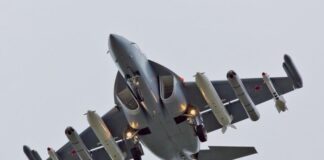
Yakovlev Yak-130 – Not Just a Trainer, It’s Also One of...
- REPORTS & ANALYSIS
- Subscription
- from Editor
- Advertising
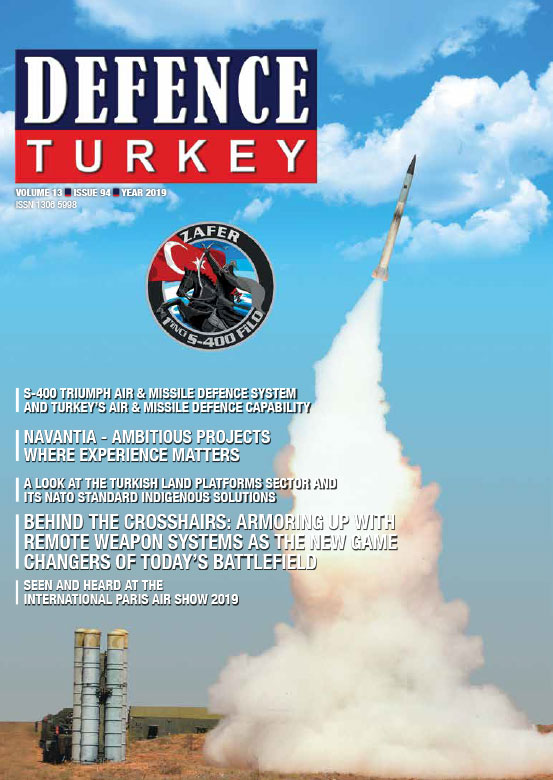
The SOM-J Missile Can be Used in MMU and AKINCI UAV
Date: Issue 94 - September 2019
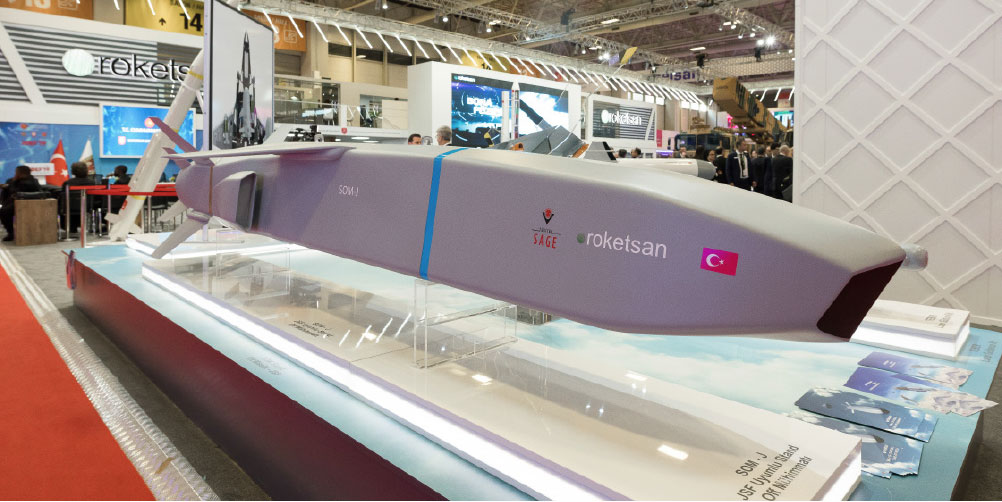
It was announced on TÜBİTAK SAGE’s social media account that the SOM-J Cruise Missile, which was developed by lowering the features of SOM Cruise Missiles, via TÜBİTAK SAGE and ROKETSAN cooperation, so that it can fit into the interior station of the F-35 Lightning II Joint Strike Fighter of (JSF), could be integrated into the National Combat Aircraft (MMU/T-FX) and Akıncı UAV after Turkey’s suspension from F-35 program.
In the announcement made on the Institute’s twitter account, following statements appeared: “The SOM-J missile developed by TÜBİTAK SAGE and Roketsan for F-35 aircraft could be integrated into the National Combat Aircraft and Akıncı UAV. In addition, as one of the few countries in the world developing cruise missile for the F-35 aircraft, it can be exported to friendly and allied countries”.
The SOM-J missile is a member of the medium-range, air-to-land ammunition family SOM and was designed to be used against heavily protected land and sea targets. The SOM-J missile has a modular design to support the required operational flexibility and was developed based on SOM Ammunition technology, which already exists in the inventory of the Turkish Air Force.

DT Medya LTD. ŞTİ.
İlkbahar Mah. Güney Park Küme Evleri (Sinpaş Altınoran) Kule-3 No:142 Çankaya-Ankara Turkey
+90 (312) 557 9020

Turkey's smart cruise missile SOM-J
Stand-Off Missile SOM-J, compatible with 5th generation fighters, was developed in partnership with TÜBİTAK SAGE and Roketsan.
SOM-J is designed to be used against heavily protected land and sea targets.
With a range of 275 km, SOM-J can be used by F-35 and F-16 jets and can operate in all weather conditions.
Work continues on integrating the SOM-J missile into AKINCI and AKSUNGUR unmanned combat aerial vehicles.
SOM-J will also be among the weapons that can be carried in the internal weapons bay of Turkey's 5th Generation fighter aircraft, the National Combat Aircraft (MMU).
The ground tests of the missile begun at Sinop Test Field in July 2018 and were completed in October 2020.
All tests of the SOM family SOM-A, SOM-B1, SOM-B2, SOM-C1, SOM-C2 and SOM-J variants have been completed and mass production preparations are currently ongoing.
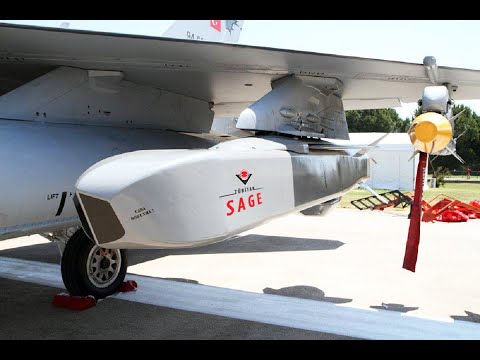
Related News
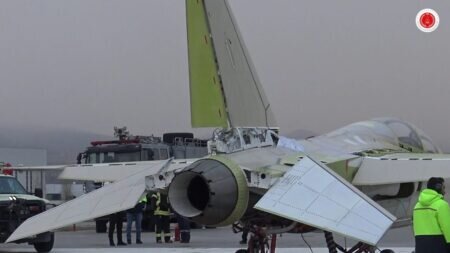
Leave a Comment Cancel reply
Save my name, email, and website in this browser for the next time I comment.

Turkey Gears Up For Mass Produced First National Turbojet Engine KTJ-3200
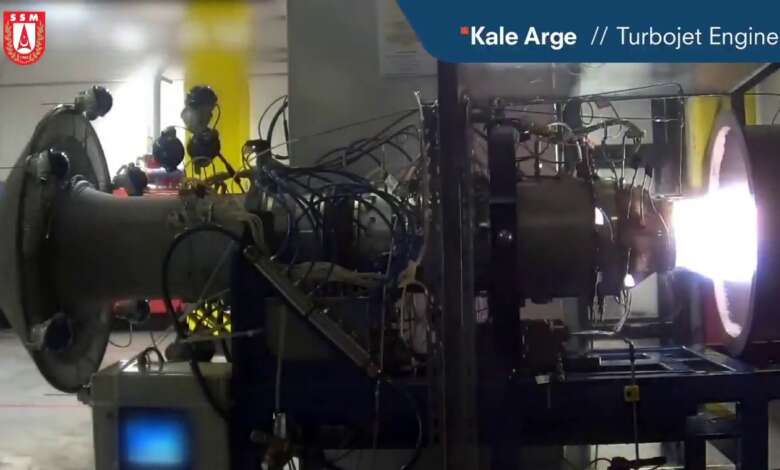
Turkey’s first turbojet engine KTJ-3200 entered mass production phase. The engine will power a variety of cruise missiles like SOM family cruise missiles, ATMACA, and many more.
Significant progress has been made in the KTJ-3200 Turbojet Engine, which has been developed by KALE R&D within the scope of the ‘Development of Turbojet Engines Project’ initiated by the Presidency of Defense Industries (SSB).
The first deliveries of the engines were made for the execution of various tests on the KTJ-3200. During the 15th International Defense Industry Fair (IDEF’21), the serial production contract of the engines was also signed.
According to the information obtained by SavunmaSanayiST.com KALE R&D has delivered one KTJ-3200 Turbojet Engine to Roketsan and TÜBİTAK-SAGE. With the delivered engines, the integration activities of the SOM Cruise Missile and the KTJ-3200 engine for the ATMACA Anti-Ship Missile have officially started.
🚀💥| Türk Füzelerine @KaleArge güç veriyor! 🔹Türkiye'nin ilk turbojet motoru KTJ-3200 seri üretime geçti. 🔹Kale Arge, KTJ-3200 tercübesiyle yeni turbojetler geliştiriyor. 🔹Kasım ayında yapılan törenle yüksek performanslı turbojet motor ARAT'ın çalışmaları hızla başlatıldı. pic.twitter.com/nalU1XdkKB — SavunmaSanayiST.com (@SavunmaSanayiST) January 13, 2022
First Firing Tests with KTJ-3200
The first firing of the SOM Cruise Missile equipped with the KTJ-3200 is expected to be carried out in 2022. The Kale Arge production KTJ-3200, which has terminated Turkey’s dependence on the French-made TR40 engine, is expected to be integrated into different cruise missiles in the future.
Developed with the experience gained from the KTJ-3200, turbojet engines with higher or less thrust can also be used in missile systems such as SOM-J and Medium Range Anti-Ship Missile (OMGS). On the other hand, the engine can be used on different platforms such as target aircraft with various modifications.
It is estimated that the KTJ-3200 Turbojet Engine, for which the serial production contract has been signed, will be supplied in large quantities. Previously, the number of SOM Cruise Missiles to be supplied by the Presidency was announced as 415.
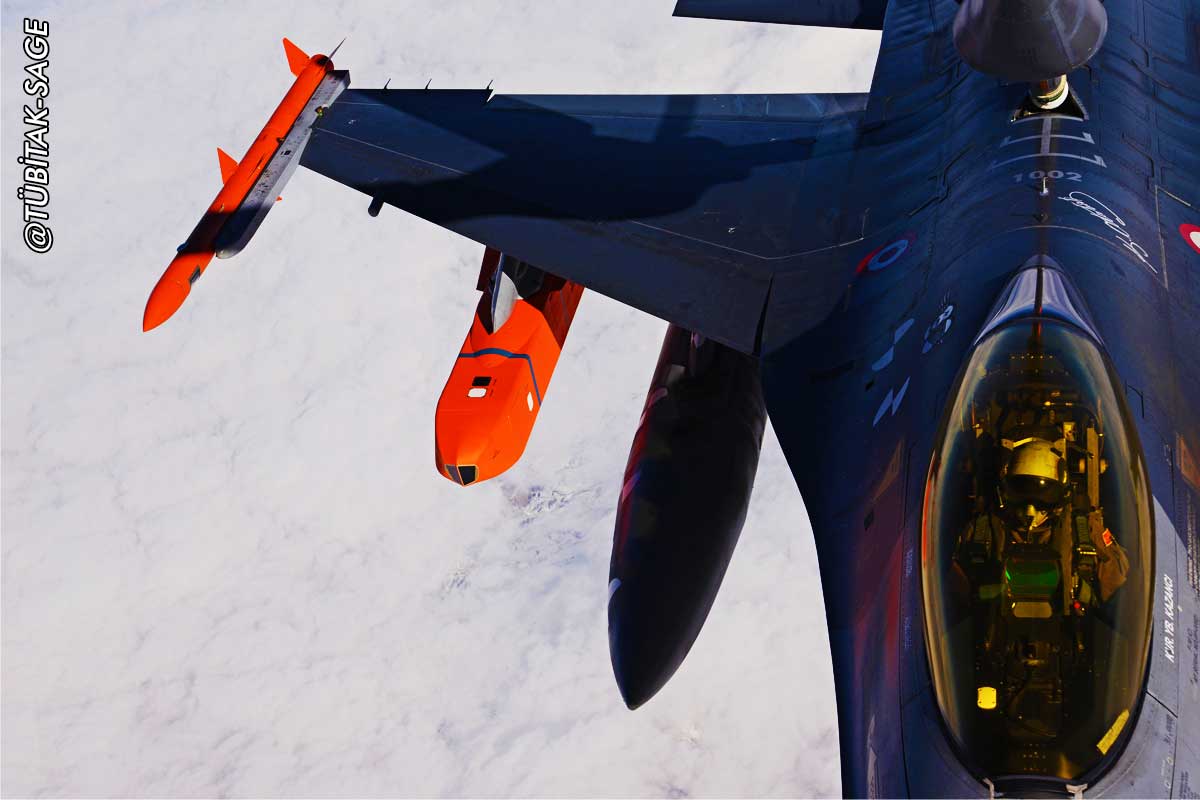
Thanks to the KTJ-3200 engine, which was developed with national resources and whose ‘mass production’ deliveries are expected to begin in a short time, it is estimated that production activities will accelerate within the scope of the order of 415 SOM Cruise Missiles for the needs of the Air Force Command.

ARAT Project
In last October, a cooperation protocol was signed between the Turkish Presidency of Defense Industries (SSB) and Kale R&D for the ARAT Project that will power the National Cruise Missiles.
The ARAT project, which means ‘death fish’, aims to provide the engine needs of platforms in need of similar propulsion levels, especially cruise missiles, with domestic and national capabilities. The ARAT engine, which has a design and qualification capable of working at high altitude and in harsh environmental conditions, will also meet an important need of cruise missiles.
KTJ-3200 Turbojet Engine Specifications
• Weight: 48 kg • Diameter: 30cm • Altitude: 5,000 m • Speed: 900 km/h (0.95 Mach) • Length : 72 cm • Service Life: 17 hours • Thrust: 3.2kN and max 3.5kN [787lbf/357kgf] • Systems to be used: SOM, Atmaca… • Fuel: JP8 and JP10 Liquid Jet • Working Principle: Four-stage axial • Electricity Generation: An alternator with a capacity of 6kVA
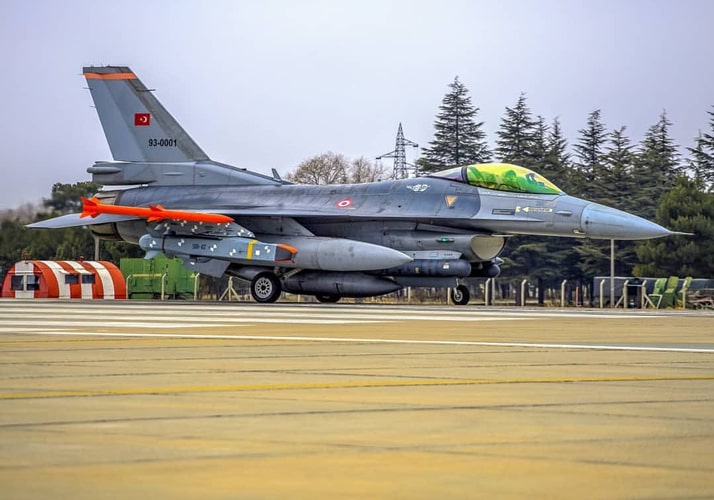
SOM Cruise Missile
Developed by TÜBİTAK-SAGE and mass produced by Roketsan, SOM is Turkey’s first national air-launched cruise missile (ALCM). The SOM Cruise Missile, which has a maximum range of 250+ kilometers, has a low radar cross-sectional area and precision strike capability.
SOM-J Cruise Missile
Developed under the main contractor Roketsan, the SOM-J has a lower silhouette than the SOM Missile. SOM-J, which is compatible with the internal weapon stations of stealth warplanes, has a maximum range of 275+ kilometers.
ATMACA Anti-Ship Missile
ATMACA Anti-Ship Missile, developed by Roketsan, is Turkey’s first national anti-ship missile. ATMACA Missile , which has a maximum range of 222+ kilometers, has an active radar seeker. ATMACA has many advanced features such as sea-skimming.
Read More: Turkey Greenlights Serial Production of First National Aircraft
TurkishDefenceNews.com
Leave a Reply Cancel reply
Your email address will not be published. Required fields are marked *
Save my name, email, and website in this browser for the next time I comment.
SOM Stand-Off Missile
Stand-Off Missile [SOM] is an air-to-surface cruise missile fired from beyond the range of air defence systems, and is suited for use against heavily defended land or naval targets deep in the battlefield.
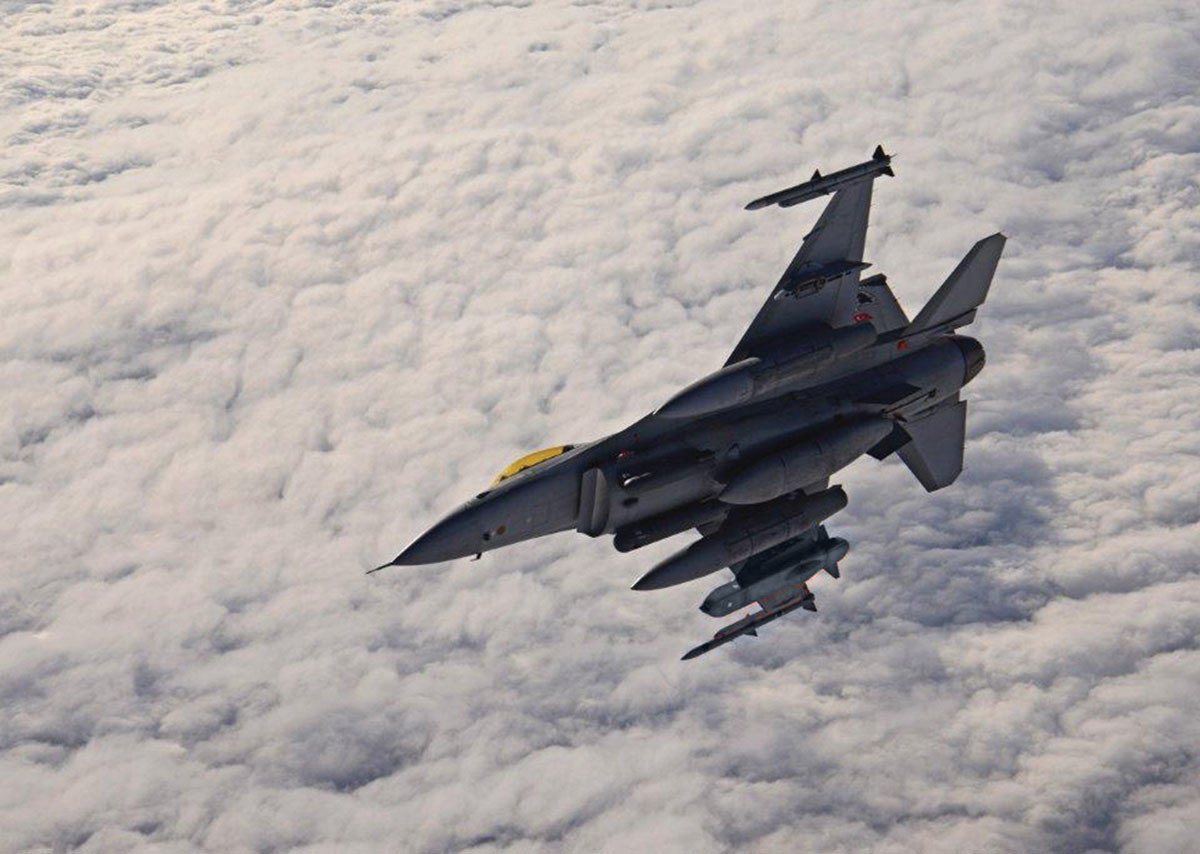
System Specifications
- Capable of Engaging Opportunity Targets
- Selectable Impact Parameters
- Autonomous use
- Low Radar Cross Section
- High Precision Terminal Phase via Imagining Infrared Seeker [IIR]
- Low Observability
- High Precision
- Operable in all Weather Conditions
- Resistant to Countermeasures
- Target Update, Re-Attack and Mission Abort Capability via Data Link
- 3D mission planning
- Time on Target [ToT], Designated Time on Target [DToT], Simultaneous Time on Target [SToT], Ripple [Salvo] Fire
- Engagement against Land and Surface Targets from Surface and Underwater Platforms
- Re-Attack Mode
SOM-A Technical Specifications
Som-b1 technical specifications, som-b2 technical specifications.
*INS Inertial Navigation System **GPS Global Positioning System ***TRN Terrain Referenced Navigation ****IBN Image-Based Navigation *****ATA Automatic Target Acquisition ******IIR Imaging Infra-Red

Other Precision Guided Products
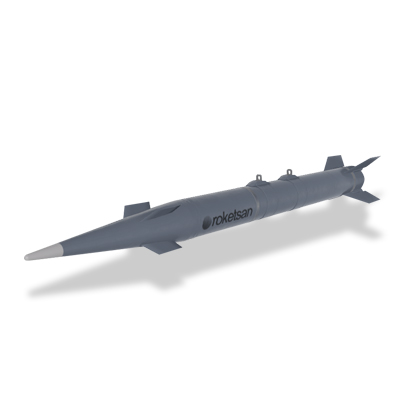
Write down the word you are searching for and press "enter". Press "ESC" to close.
Cookie settings.
Cookies are used on our website in order to better serve you. You can find detailed information about cookies in our Cookie Policy. You can always manage your preferences in the "Manage Cookies" section.
These cookies are essential for you to browse the website and use its features, such as accessing secure areas of the site. Cookies that allow web shops to hold your items in your cart while you are shopping online are an example of strictly necessary cookies. These cookies will generally be first-party session cookies. While it is not required to obtain consent for these cookies, what they do and why they are necessary should be explained to the user.
Also known as “performance cookies,” these cookies collect information about how you use a website, like which pages you visited and which links you clicked on. None of this information can be used to identify you. It is all aggregated and, therefore, anonymized. Their sole purpose is to improve website functions. This includes cookies from third-party analytics services as long as the cookies are for the exclusive use of the owner of the website visited.
allow us to personalise your experience and to send you relevant content and offers, on this website and other websites.

Turkey Unveils Drone-Launched Mini Cruise Missile

Turkish defense firm Baykar has unveiled a drone-launched autonomous mini cruise missile.
Baykar developed the Bayraktar Kemankes to arm its Bayraktar Akinci, TB2, and TB3 combat drones, the company wrote in a statement.
The missile features an artificial intelligence-supported autopilot system and has an endurance of one hour.
AI-Aided Accuracy
The missile’s Artificial Intelligence Assisted Optical Guidance System helps it “identify and engage targets with pinpoint accuracy, even under challenging conditions,” according to the company.
The all-weather missile can operate day and night and has robust anti-jamming capability, the company claimed.
The missile’s first flight test is planned within two months and serial production by the end of this year, according to Defense Express .
The missile can travel at a maximum speed of 0.7 Mach (720 kilometers/447 miles per hour) and cruise speed of 0.3 Mach (360 kilometers/224 miles per hour).
The 1.73 meters (5.67 feet), 30 kilograms (66 pounds) missile features a 6 kilograms (13 pounds) warhead, a range of 200 kilometers (124 miles), and a communication range of 50 kilometers (31 miles).
The developer is reportedly planning to expand its communication range to up to 100 kilometers (62 miles).
In comparison, the Turkish SOM cruise missile can weigh 500 to 620 kilograms (1,102 to 1,367 pounds), featuring a warhead of 230 kilograms (507 pounds). It has a range of 250 kilometers (155 miles).
Subscribe to our mailing list
Related articles.

Hensoldt, HTX Develop New Urban Counter-Drone System

Taiwan Plans Indigenous Cruise Missile Deployment in 2024

US Navy Orders Solar-Powered VTOL Drone From California Company
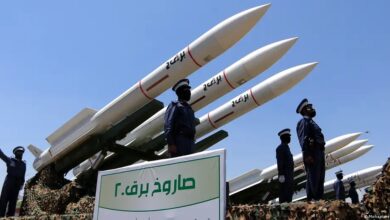
Houthi Rebels Could Be Running Low on Weapons: US Commander
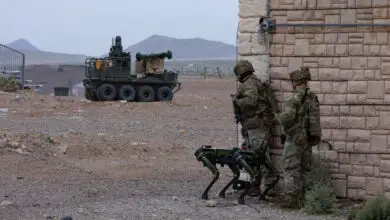
US Taps Consortium for Army’s Robotic Combat Vehicle Software Prototype
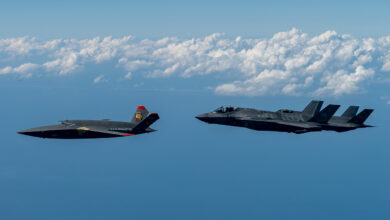
Valkyrie Tactical Drone Demos Electronic Warfare Attack for US Marines

Taiwan Puts Frontline Island on Alert Over Chinese Drone Incursions
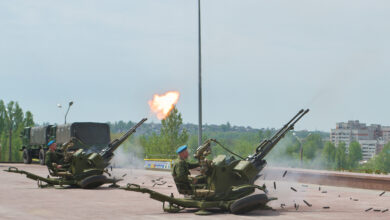
Russia to Deploy Mobile Anti-Aircraft Gun Units to Counter Ukrainian Drones

Japanese Soldiers Complete US-Led Tomahawk Land Attack Missile Training

Hermeus Unveils Jet-Powered Quarterhorse Mk1 Drone
Turkey may soon put its controversial Russian S-400 air defenses in operation
- Turkey may deploy its Russian S-400 Triumf air defenses on the Iraqi border.
- US officials have warned Turkey against "activating" it.
- The missile attacks between Israel and Iran may also be a rationale to deploy the S-400.

Turkey may deploy its advanced Russian S-400 Triumf air defenses on the Iraqi border for its planned summer offensive against the Kurdistan Workers' Party, PKK, in Iraqi Kurdistan. Such a move would mark the first operational deployment of the missile system since Ankara received it in 2019 to Western reproach.
Turkiye newspaper reported earlier this month that Turkey's S-400s may be deployed on the border, implying it will defend against drones allegedly acquired by the PKK. But the system is effective against bigger threats than crude drones. It's designed to shoot down cruise and ballistic missiles like those fired by Iran in its unprecedented April 13 attack against Israel, and its deployment could worsen tensions with other NATO allies incensed that Turkey even has them.
The deal for the S-400 cost Turkey an estimated $2.5 billion. Indirectly, it has cost it far more than that in losses of over $9 billion it could have made from manufacturing over 900 parts for the global F-35 supply chain.
Washington banned Ankara from buying F-35s over concerns it would give Russian technicians data that spoils the fighter's stealth. On top of all that, the US slapped sanctions on Turkey's arms procurement agency.
While enduring these penalties, Turkey never put the S-400 into service. Following the system's delivery, US officials warned Turkey against "activating" it. Turkey tested its F-16s and F-4 fighters against the S-400's radar in late 2019. Washington strongly rebuked Ankara in October 2020 for announcing it was testing the system.
Since then, there has been no indication that Turkey's S-400s have been put into operation. In November 2022, then-Defense Minister Hulusi Akar said Ankara has "no problems with the S-400" and that the system "is in place and ready for use."
Its purported upcoming deployment on the Iraqi border would be the first time Turkish S-400s have been put into use five years after Ankara received them.
Ali Bakir, a Turkey expert at Qatar University's Ibn Khaldon Center and nonresident senior fellow at the Atlantic Council's Scowcroft Middle East Security Initiative, is skeptical of the report but doesn't outright dismiss the possibility.
"This could be a trial balloon, an operational requirement due to the foreign threat in Northern Iraq, where Turkish troops are stationed, or simply untrue news," Bakir told Business Insider. "If the S-400 is deployed for operational needs, it could be to counter the potential threat of Iran's ballistic missiles."
Even though Turkey's other air defenses are capable of combating aerial threats from the PKK, Turkey requires an advanced system for intercepting ballistic missiles fired from Iran.
"Considering that Ankara has stationed troops in Northern Iraq, it would be more logical to deploy such a system to protect them during regional escalation or confrontation," Bakir said. "Iran has used missiles lately against Northern Iraq."
Related stories
Bakir said that the recent missile attacks between Israel and Iran may be a further rationale to deploy the S-400 in Turkey's east."Such deployment will serve Turkey's security as well as the security of Iraq, which is improving its ties with Ankara lately in an unprecedented way," Bakir said.
Deploying S-400s as a contingency to counter Iranian missiles could create "an extremely complex situation" for Turkey, said Suleyman Ozeren, a lecturer at the American University and senior fellow at the Orion Policy Institute."Such a move might mean that Turkey would be using the Russian weapon system against Russia's most loyal ally in the Middle East," Ozeren told BI. "However, Turkey may use the potential threat of Iran-linked militia groups or PKK as a pretext to deploy S-400s."
He predicts a deployment would serve three primary objectives.
"First, the S-400s have been one of the most expensive yet least productive policy decisions," Ozeren said. "By deploying them and making a lot of noise about it, the AKP may aim to silence critics at home."
The AKP is President Recep Tayyip Erdogan's party, which decided to buy the S-400 in the late 2010s and has defended the contentious purchase ever since.
"Second, Ankara may want to prove to Moscow that its military cooperation still stands," Ozeren said. "Third, such a decision may aim to send a message to the West — primarily to the US — that Ankara's position vis-à-vis Russia and NATO remains unchanged."
He noted the Turkish S-400 is a "standalone system" incompatible with NATO systems, limiting its use and confirming its "high cost and lack of functionality."
A Turkish deployment could escalate the lingering dispute with the US.
In January, then-Acting Deputy Secretary of State Victoria Nuland said Washington could discuss readmitting Ankara into the F-35 program if it resolves the S-400 issue.
"The problem is not about where Ankara deploys S-400s but about the S-400 remaining in Turkey's possession," Ozeren said.
Bakir argued that weapons are purchased "with the intention of use" for either "offensive or defensive purposes." "Even if Turkey were to hypothetically trade the S-400, the US could still mishandle the case of the F-35," Bakir said. "There is no guarantee that Congress will not attempt to pressure Ankara in the future."
Ozeren, in contrast, reiterated that the fundamental problem is Ankara's "purely political" decision to purchase S-400s, which he argued was motivated by the AKP's desire to distance Turkey from NATO.
"Such a goal was unattainable and unrealistic given the extent of Turkey's integration into the NATO defense system," Ozeren said. "The S-400 decision has left Ankara in a precarious situation that has remained unchanged."
"No matter the AKP's motivations back then, reality dictates that the ruling party reverse its course and go back to a stronger alliance with NATO."
Watch: Russia flaunts intercontinental ballistic missile in new video
- Main content
Iran says it gave warning before attacking Israel. US says that's not true
- Medium Text
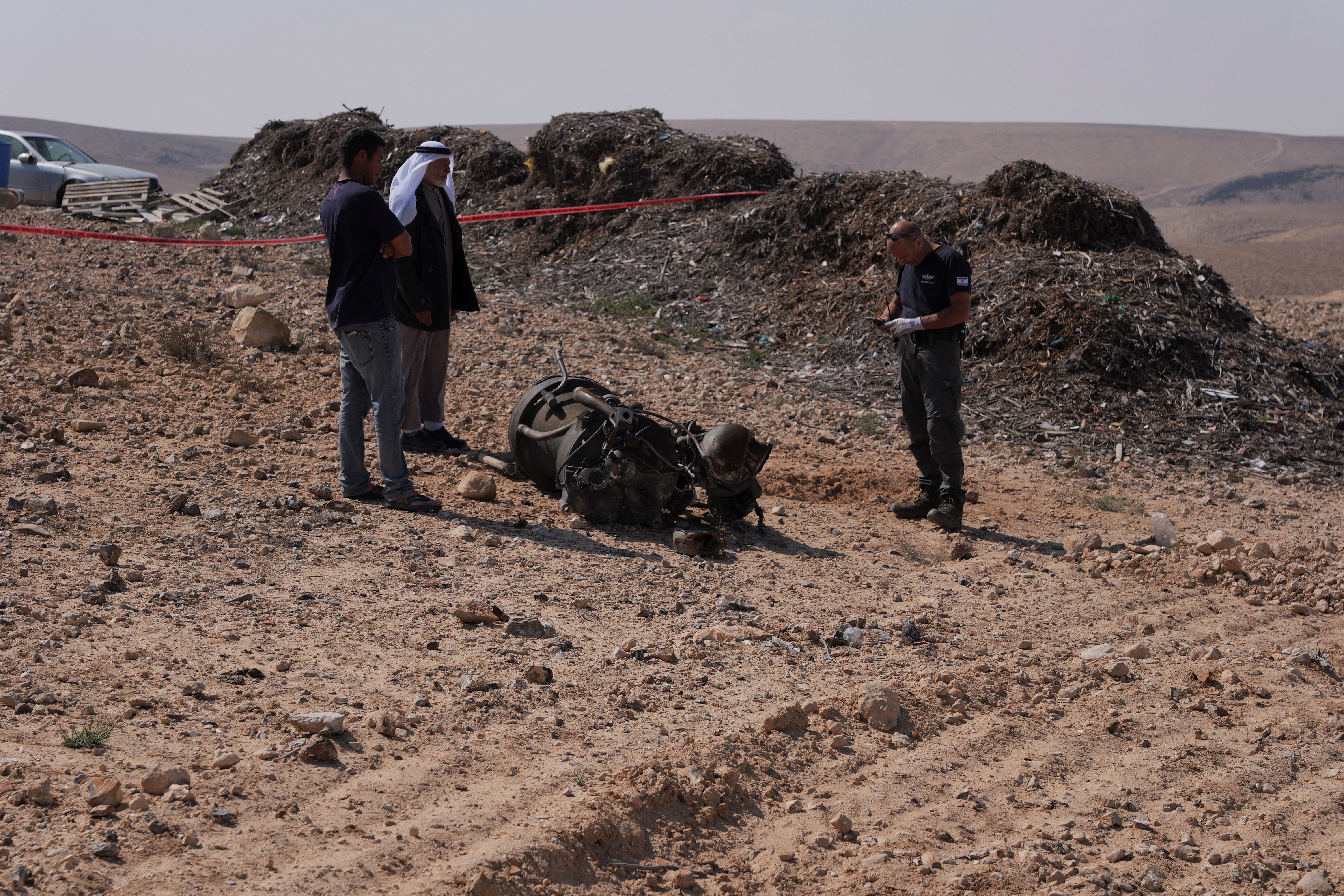
- Iran said it gave 72 hours' notice of attack
- U.S. denies receiving extensive warning
- Israel and allies downed most drones and missiles
Sign up here.
Reporting by Jeff Mason and Rami Ayyub in Washington, Tuvan Gumrukcu in Ankara, Ahmed Rasheed in Baghdad and Parisa Hafezi and Samia Nakhoul in Dubai; Writing by Angus McDowall; Editing by Susan Fenton and Lisa Shumaker
Our Standards: The Thomson Reuters Trust Principles. New Tab , opens new tab

Thomson Reuters
Jeff Mason is a White House Correspondent for Reuters. He has covered the presidencies of Barack Obama, Donald Trump and Joe Biden and the presidential campaigns of Biden, Trump, Obama, Hillary Clinton and John McCain. He served as president of the White House Correspondents’ Association in 2016-2017, leading the press corps in advocating for press freedom in the early days of the Trump administration. His and the WHCA's work was recognized with Deutsche Welle's "Freedom of Speech Award." Jeff has asked pointed questions of domestic and foreign leaders, including Russian President Vladimir Putin and North Korea's Kim Jong Un. He is a winner of the WHCA's “Excellence in Presidential News Coverage Under Deadline Pressure" award and co-winner of the Association for Business Journalists' "Breaking News" award. Jeff began his career in Frankfurt, Germany as a business reporter before being posted to Brussels, Belgium, where he covered the European Union. Jeff appears regularly on television and radio and teaches political journalism at Georgetown University. He is a graduate of Northwestern University's Medill School of Journalism and a former Fulbright scholar.

World Chevron
Two earthquakes, the largest a 6.1 magnitude, struck Taiwan's eastern county of Hualien on Saturday, the island's weather administration said, with no immediate reports of damage.

- International

Trump's hush money trial

University protests
April 14, 2024 - Iran's attack on Israel
By Jerome Taylor, Heather Chen , James Legge, Sophie Tanno, Emma Tucker , Kaanita Iyer , Paul LeBlanc , Catherine Nicholls, Maureen Chowdhury , Antoinette Radford and Eve Rothenberg, CNN
Our live coverage of Iran's attack on Israel has moved here .
India calls on Iran to release 17 Indian crew members on board seized container ship
From CNN's Sandi Sidhu in Hong Kong
India has called on Iran to release 17 Indian crew members on board a container ship seized by Iran on Saturday.
Indian External Affairs Minister Subrahmanyam Jaishankar said that he spoke to his Iranian counterpart Iranian Foreign Minister Hossein Amir Abdollahian and "took up the release of 17 Indian crew members of MSC Aries."
Four Filipino seamen were also on board the ship, according to the Philippine Department of Migrant Workers.
The department said it was working with its government, the ship owner, and the operator to release the captured seafarers.
On Saturday, Iran’s Revolutionary Guards seized an Israeli-linked container ship in a helicopter operation near the Strait of Hormuz, state news agency IRNA reported.
Mediterranean Shipping Company (MSC) said there were 25 crew members on board.
Japanese prime minister condemns Iran's attack on Israel
From CNN's Junko Ogura in Tokyo
Japanese Prime Minister Fumio Kishida on Sunday said he "strongly condemns" Iran's missile and drone attack on Israel.
"(The attack) further aggravates the current situation in the Middle East. We are deeply concerned and strongly condemn such an escalation," Kishida told reporters.
Kishida said Japan would continue diplomatic efforts to "prevent the situation from worsening and to calm the situation down," and "respond in cooperation with other countries."
Blinken calls British and German counterparts following Iran's attack on Israel
From CNN's Philip Wang
US Secretary of State Antony Blinken spoke with his counterparts from the United Kingdom and Germany on Sunday following Iran's attack on Israel, according to readouts from the State Department.
All parties agreed "the importance of condemning Iran's attack in the strongest possible terms and preventing further escalation," the readout said.
Blinken earlier held phone calls with his counterparts from Turkey, Egypt, Jordan and Saudi Arabia , in which he emphasized the importance of avoiding escalation in the Middle East and of "a coordinated diplomatic response."
US forces destroyed more than 80 attack drones from Iran and Yemen, Central Command says
From CNN's Philip Wang
US forces intercepted more than 80 one-way attack drones and at least six ballistic missiles from Iran and Yemen during its attack on Israel, according to a statement from the Central Command.
The operation included destroying a ballistic missile on its launcher vehicle and seven drones on the ground in Iranian-backed Houthi-controlled areas of Yemen, CENTCOM said.
"Iran's continued unprecedented, malign, and reckless behavior endangers regional stability and the safety of U.S. and coalition forces," the statement added.
Israeli and Iranian ambassadors trade accusations during UN Security Council session
From Abel Alvarado in Atlanta

Israel and Iran’s United Nations ambassadors condemned each other’s actions during Sunday’s UN Security Council emergency session called to address Iran’s attack on Israel.
Israel’s UN ambassador Gilad Erdan said Iran "must be stopped before it drives the world to a point of no return, to a regional war that can escalate to a world war." Erdan accused Iran of seeking world domination and that its attack proved that Tehran "cares nothing, nothing for Islam or Muslims" before pulling out a tablet to show a video of Israel intercepting Iranian drones above Jerusalem’s Al-Aqsa Mosque.
Erdan called on the UN Security Council to designate the Iranian Revolutionary Guard Corps (IRGC) as a terror organization.
“Action must be taken now, not for Israel's sake, not for the region's sake, but for the world's sake. Stop Iran today."
Iran’s UN Ambassador Amir Saeid Iravani said his country’s operation was "entirely in the exercise of Iran’s inherent right to self-defense, as outlined in Article 51 of the Charter of the United Nations and recognized by international law."
Iravani said:
"This concluded action was necessary and proportionate," adding that the operation was “precise and only targeted military objectives” to reduce the potential of escalation and to prevent civilian harm. “Iran is never seeking to contribute to the spillover of the conflict in the region, nor does it to escalate or spread the tension to the entire region," he said.
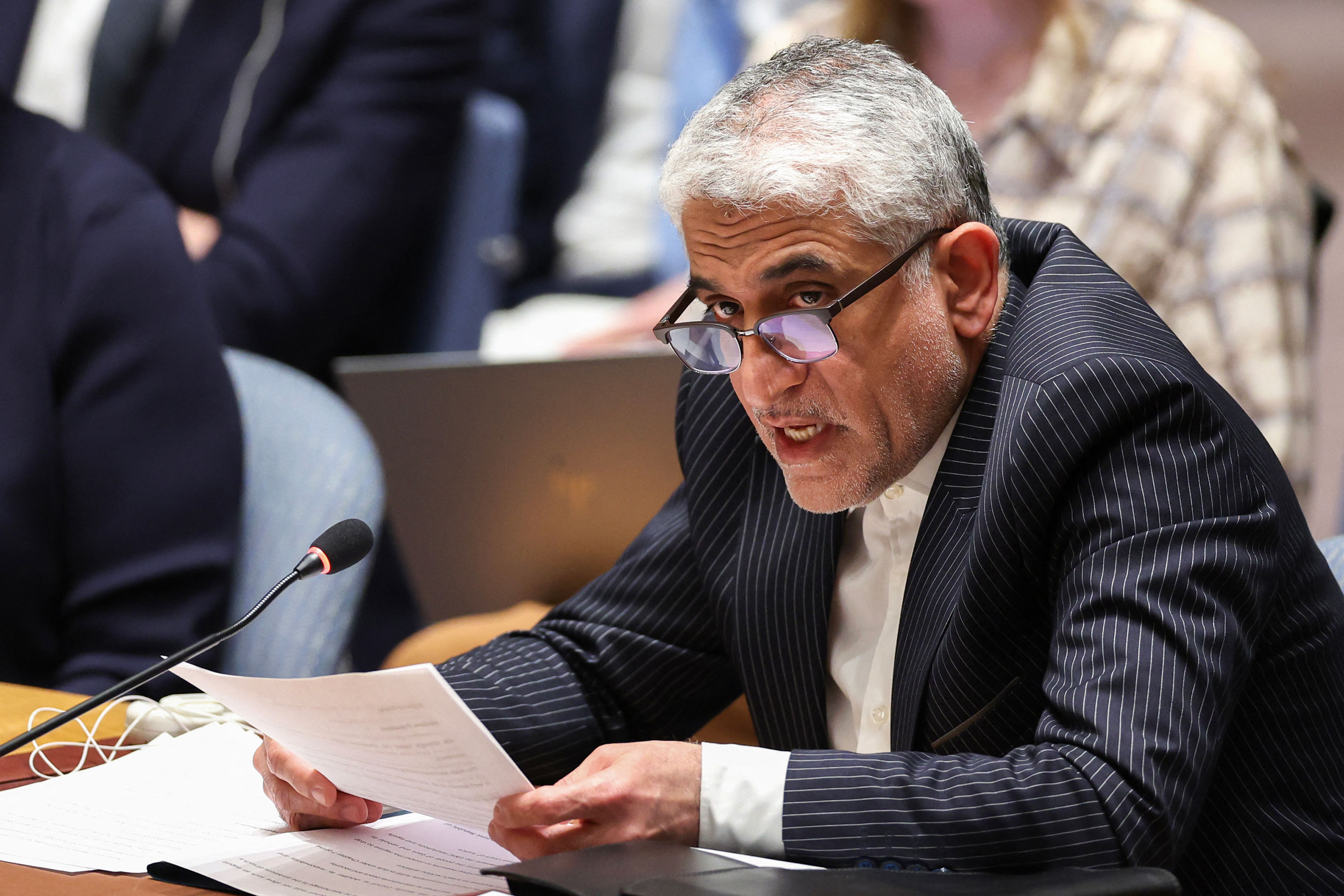
Tehran’s attack had been anticipated since a suspected Israeli strike on an Iranian diplomatic complex in Syria earlier this month.
Iravani added Iran has “no intention of engaging in conflict with the US in the region” but warned Iran will use its “inherent right to respond proportionately” should the US initiate a military operation against “Iran, its citizens or its security.”
Israeli war cabinet says it's ready to respond to Iran's attack but delays immediate action. Here's the latest
From CNN staff
The hours-long Israeli war cabinet meeting ended Sunday night without a decision on how Israel will respond to Iran’s missile and drone attack , an Israeli official said.
The cabinet is determined to respond — but has yet to decide on the timing and scope and the official said the military has been tasked with coming up with additional options for a response.
Separately, a senior Biden administration official told reporters that an Israeli official told the United States that it's not looking to significantly escalate the showdown with Iran.
CNN analyst Barak Ravid said Israeli ministers Benny Gantz and Gadi Eisenkot advocated for swift action, but US President Joe Biden's phone call with Prime Minister Benjamin Netanyahu led to a decision to delay the response until the next day.
Here are the latest headlines:
- Retaliation is over, Iran told US: Iran privately messaged the United States that its retaliation against Israel had concluded, echoing what Tehran said publicly, according to a senior administration official. Late Saturday, Iran said its attack on Israel is a response to Israel's strike on the Iranian consulate in Damascus, and "the matter can be deemed concluded." However, President Ebrahim Raisi said any “new aggression against the interests of the Iranian nation will be met with a heavier and regrettable response,” according to Iran’s state news channel IRIB.
- United Nations response: UN Secretary-General António Guterres called for a de-escalation of violence after Iran’s attack. Guterres said the United Nations and member countries have a “shared responsibility” to engage “all parties concerned to prevent further escalation.” He also called for a ceasefire in the Israel-Gaza conflict. “Neither the region nor the world can afford more war,” he said.
- G7 and others: Amid a flurry of diplomatic activity in response to Iran's attack, the G7 nations said they would work together to "stabilize the situation" in the Middle East, according to a statement from Biden. Also, Jordan summoned Iran's ambassador in Amman on Sunday after it intercepted Iranian drones over the country.
- Meanwhile in Gaza: As thousands of Palestinians were turned away from returning to their homes in northern Gaza on Sunday, a 5-year-old girl was shot in the head by Israeli soldiers, her mother said. Video showed a man carrying a 5-year-old girl named Sally Abu Laila, who was bleeding from her head, with people crowding around her in panic trying to cover her wound.
Also on Sunday:
- Israel decided to lift its restrictions on large gatherings and to reopen schools on Monday.
- The US Department of Homeland Security has not identified any “specific or credible threats” to the US since Iran attacked Israel.
Blinken calls Turkish, Egyptian, Jordanian and Saudi counterparts following Iran's attack
US Secretary of State Antony Blinken on Sunday spoke with his counterparts in Turkey, Egypt, Jordan, and Saudi Arabia following Iran's attacks in Israel, according to readouts from the State Department.
During his phone calls, Blinken emphasized the importance of avoiding escalation in the region and the importance of "a coordinated diplomatic response."
In his conversation with Jordan and Egypt, Blinken also underlined the significance of achieving an "enduring end to the crisis in Gaza."
Iran will be held responsible if any action is taken against the US or Israel, deputy ambassador warns
From CNN’s Abel Alvarado
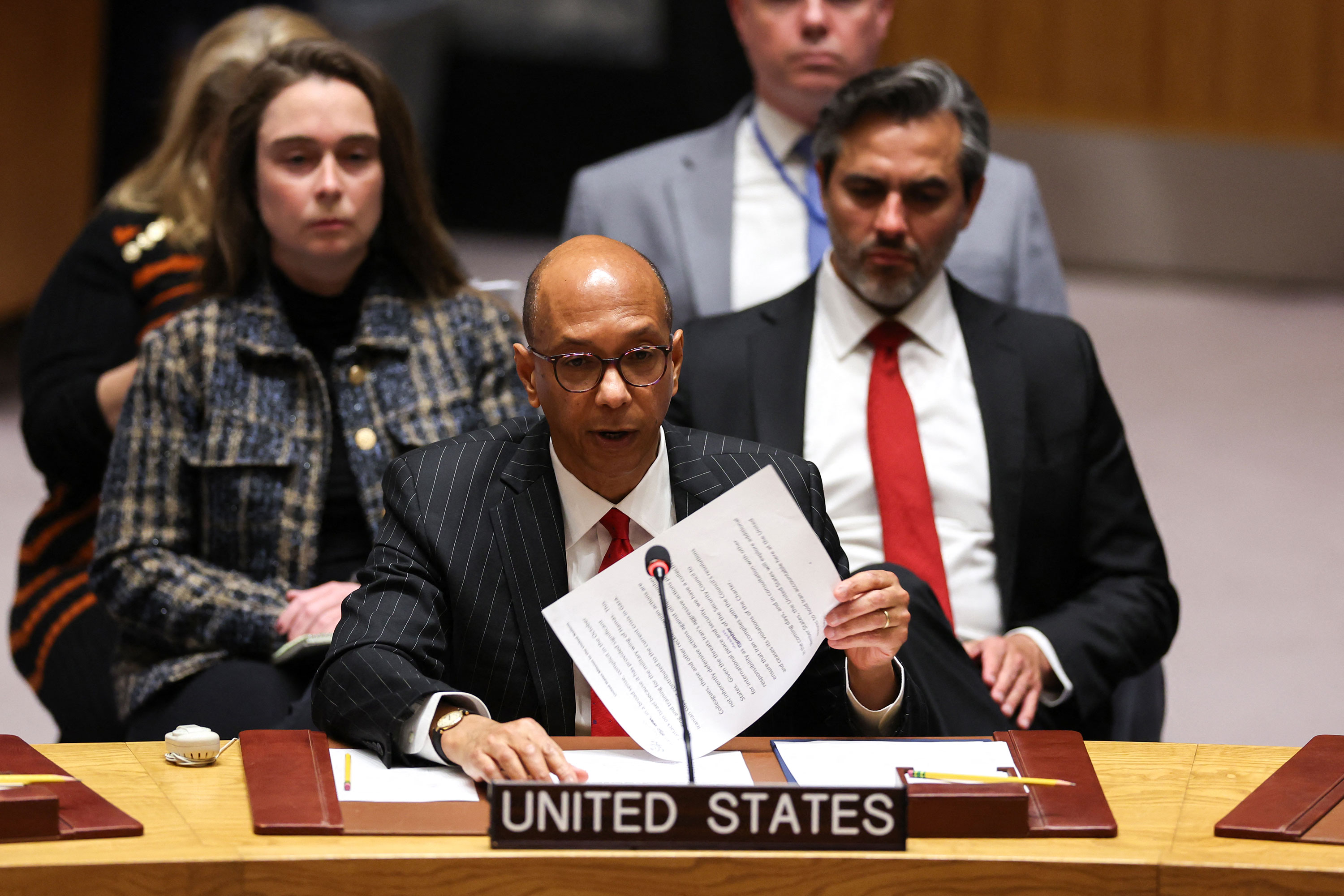
The United States warned Iran against taking any action against the US or Israel during the UN Security Council emergency session over Iran’s attack on Israel.
“Let me be clear, if Iran or its proxies take actions against the US or further action against Israel, Iran will be held responsible,” US Deputy Ambassador to the UN Robert Wood said Sunday.
The United States is “not seeking escalation, our actions have been purely defensive in nature,” adding that the “best way to prevent such escalation is an unambiguous condemnation of the council of Iran’s unprecedented large-scale attack,” he said.
The envoy reiterated US support for Israel and condemned Iran’s attack. “Iran’s intent was to cause significant damage and death in Israel,” Wood said.
Wood also said the UN Security Council had an “obligation to not let Iran’s actions go unanswered.”
“For far too long, Iran has flagrantly violated its international legal obligations,” he said before listing occasions Iran has violated UN Security Council resolutions and international law.
Wood accused Iran of being in a “broad sense complicit” of the October 7 attack on Israel by providing “significant funding and training for the military wing of Hamas.”
He added the US will explore "additional measures to hold Iran accountable here in the UN.”
Please enable JavaScript for a better experience.
Advertisement
Israel Faced a Sophisticated Attack From Iran
The weapons Iran employed this weekend travel farther and are more precise than those Hamas and other allies have used against Israel in the past six months.
- Share full article

By Jin Yu Young
- April 14, 2024
Late Saturday, Iran began firing hundreds of drones and missiles at Israel, including weapons that experts say are more sophisticated than anything Israel had encountered until now in six months of fighting with Hamas and its allies in the region.
Previously, Israel had faced aerial attacks from Hamas and Islamic Jihad, whose rocket arsenal includes short-range (12 to 25 miles) and somewhat inaccurate 122-milimeter rockets of the Grad family, as well as Syrian-made M-302 rockets with a range of about 100 miles. Hamas also has Fajr-5 rockets from Iran and a similar, locally made version of the Fajr-5, both with a range of about 50 miles.
The weapons Iran used on Saturday can travel much farther, and some of them can travel much faster. Still, Israel said that nearly all of the missiles and drones that Iran fired were intercepted, many with help from U.S. forces.
In the attack, 185 drones, 36 cruise missiles and 110 surface-to-surface missiles were fired toward Israel, according to Israeli military officials. Most of the launches were from Iran, though a small portion came from Iraq and Yemen, the officials said.
Fabian Hinz, an expert on Iran’s military at the International Institute for Strategic Studies in Berlin, said in a post on X that Iran was probably using a cruise missile developed by the Islamic Revolutionary Guards Corps, the Paveh 351. It has a range of more than 1,200 miles — plenty to reach Israel from Iran.
According to his post, different versions of that missile have also been provided to the Houthis in Yemen and to the Iraqi Popular Mobilization Forces.
And Jeffrey Lewis, a member of the International Security Advisory Board at the U.S. State Department, said in a post on X that Iran was using land-attack cruise missiles that could carry around a ton of explosives.
He also noted that much of Iran’s ballistic missile arsenal has a long enough range to reach Israel. And though Iran’s drones carry much smaller explosive payloads than missiles, they have the advantage of being able to hover and shift targets.
In recent decades, Iran has largely been focused on deterrence, long-range missiles, drones and air defenses. It has one of the largest ballistic missile and drone arsenals across the Middle East, according to weapons experts, and is also becoming a major arms exporter globally.
Last year, after the attack by Hamas in October, Israel asked the United States for more precision-guided munitions for its combat aircraft and more interceptors for its Iron Dome missile defense system. Israel’s weapons arsenal includes Vietnam-era missiles, some of which have a failure rate as high as 15 percent.
Jin Yu Young reports on South Korea, the Asia Pacific region and global breaking news from Seoul. More about Jin Yu Young
- International edition
- Australia edition
- Europe edition
Russia-Ukraine war: Germany stands by decision not to provide long-range missiles – as it happened
This live blog is now closed, you can read more of our Ukraine war coverage here
- 2d ago Closing summary
- 2d ago UK prime minister says Ukraine has support from UK and Germany 'for as long as it takes'
- 2d ago German leader says Europe must keep increasing aid to Ukraine after US approves new military help
- 2d ago West must boost defence as era of peace in Europe is over, says Ukrainian foreign minister
- 2d ago Russian forces make significant gains in eastern Ukraine
- 2d ago Nato drills in Finland are 'provocative', says Russia's foreign ministry
- 2d ago Russia will expand Ukraine 'buffer zone' if Kyiv gets longer range missiles, says Kremlin
- 2d ago Ukraine struck two Rosneft-owned oil depots in overnight attack, intelligence source says
- 2d ago Russian minister detained after taking especially large bribe, law enforcement agency says
- 2d ago Zelenskiy thanks US Senate for approving 'vital aid to Ukraine'
- 2d ago What is the $95bn US Senate aid bill and why has it taken so long to pass?
- 2d ago Opening summary
- 2d ago US Senate passes $95bn in aid for Ukraine, Israel and Taiwan
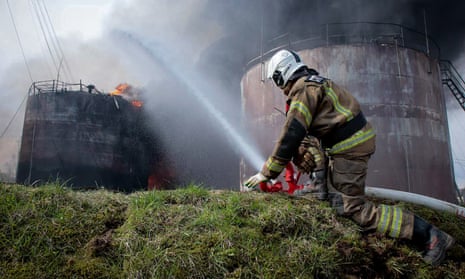
German leader says Europe must keep increasing aid to Ukraine after US approves new military help
German chancellor Olaf Scholz said on Wednesday that Europe must continue to step up its help for Ukraine even after the approval of a big US aid package, but made clear that he is sticking to his refusal to send Taurus long-range cruise missiles to Kyiv , reports the Associated Press (AP). Scholz spoke after meeting the UK prime minister Rishi Sunak in Berlin . The two countries are Europe ’s biggest suppliers of military assistance to Ukraine as it counters Russia ’s full-scale invasion, and both vowed to keep that up “for as long as it takes.” Scholz described the progress made on a US military aid package that had been held up for months as “an encouraging and necessary signal.”

“But I also want to say clearly that the United States’s decision doesn’t release us here in Europe from the task of further expanding our support for Ukraine so that the country can defend itself against the aggressor,” he said. According to the report by the AP, Scholz, whose country recently pledged to supply a third Patriot missile battery to Ukraine, appealed again for other European countries that have the system to examine whether they can spare one. The AP reports that when he was asked whether he will reverse his often-criticised refusal to send Taurus missiles, Scholz listed at length the military hardware Germany has provided and added: “As far as the weapons system you mention is concerned, my decision won’t change.” Scholz has argued that Taurus missiles could only be used responsibly with the involvement of German soldiers, whether inside or outside Ukraine, and says that is a line he does not want to cross. Sunak, who on Tuesday pledged new military aid to Ukraine, praised Germany’s efforts on air defence in particular and said “every country has got different things that it can bring to the table”. Ukrainian troops have faced acute shortages of shells and air defence systems, allowing Russian forces to edge forward in some parts of eastern Ukraine. Ukrainian president Volodymyr Zelenskiy has pleaded for greater international assistance, warning that his country will lose the war without it.
Closing summary
It has gone 6pm in Kyiv and in Moscow . We will be closing this blog soon, but you can stay up to date on the Guardian’s Russia and Ukraine coverage here .
Here is a recap of today’s latest developments:
UK prime minister Rishi Sunak said the UK and Germany will provide “unwavering support” for Ukraine “for as long as it takes” , as he visited Berlin to deepen defence and security ties between the two allies. Sunak said “every country has got different things that it can bring to the table” after German chancellor Olaf Scholz said his decision not to deliver Taurus cruise missiles to Kyiv “will not change”.
German chancellor Olaf Scholz said on Wednesday that Europe must continue to step up its help for Ukraine even after the approval of a big US aid package, but made clear that he is sticking to his refusal to send Taurus long-range cruise missiles to Kyiv. “But I also want to say clearly that the United States’s decision doesn’t release us here in Europe from the task of further expanding our support for Ukraine so that the country can defend itself against the aggressor,” he said.
President Volodymyr Zelenskiy urged “speed” on providing weapons to Ukraine. In a social media post on X, Zelenskiy wrote: “The key now is speed. The speed of implementing agreements with partners on the supply of weapons for our warriors. The speed of eliminating all Russian schemes to circumvent sanctions. The speed of finding political solutions to protect lives from Russian terror.”
The US Senate voted resoundingly on Tuesday to approve $95bn in aid for Ukraine, Israel and Taiwan , as a bipartisan super-majority united to send the long-stalled package to Joe Biden’s desk for signature. “Today the Senate sends a unified message to the entire world: America will always defend democracy in its hour of need,” said Senate Democratic leader Chuck Schumer in a floor speech on Tuesday afternoon. “We are showing Putin that betting against America is always, always a grave mistake.”
Ukraine’s foreign minister enthusiastically praised US politicians for approving a long-delayed $61bn military aid package for Ukraine , but cautioned that fresh supplies would not immediately turn the tide on the battlefield. “Hallelujah,” Dmytro Kuleba said when asked for his reaction to Tuesday’s final vote by the US Senate. He added that he was hopeful that the White House would unveil a new package of weapons “within days, maybe hours,” and it was “just a matter of logistics” to get the supplies to the frontline.
Zelenskiy said he is “grateful to the United States Senate for approving vital aid to Ukraine today”, after a US bill was passed which allocates $60.84bn to support Ukraine in its battle to repel Russia’s invasion. In a social media post on X, Zelenskiy thanked Schumer and the Republican Senate leader, Mitch McConnell, for “their strong leadership in advancing this bipartisan legislation”. He also thanked “all US Senators on both sides of the aisle who voted in favor of it”.
The Kremlin said on Wednesday that Russia would further expand its “buffer zone” inside Ukraine if Kyiv takes delivery of longer-range Atcams missiles from the US that allow it to strike deeper inside Russia. The US is preparing a $1bn military aid package for Ukraine, the first to be sourced from the yet to be signed $95bn foreign aid bill, two US officials told Reuters on Tuesday.

Ukrainian drones attacked oil facilities in western Russia overnight, defence sources in Kyiv confirmed on Wednesday. Officials in the western Russian regions of Smolensk and Lipetsk first announced the attacks, blaming Ukrainian unmanned aerial vehicles for starting blazes at energy sites. “The fire is localised. There is no threat of its spread beyond the facilities,” Smolensk regional governor Vasily Anokhin said, adding that no one was injured or killed.
Another drone attack targeted the Lipetsk region farther south, which houses metallurgical and pharmaceutical sites , governor Igor Artamonov said on Wednesday.
Russian forces hit a Ukrainian drone production facility and a Ukrainian army fuel depot , Russia’s defence ministry said on Wednesday.
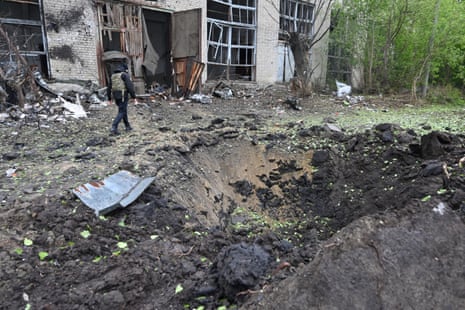
Russian missiles damaged residential buildings and injured six people in Ukraine’s second-largest city, Kharkiv, early on Wednesday , governor Oleh Synehubov said on Telegram. The attack damaged three residential buildings, two offices, three non-residential buildings and a gas pipeline in the central district of the city, according to the governor’s statement.
Russia’s RIA state news agency reported on Wednesday, citing unnamed sources within Russian forces, that their attack hit soldiers’ quarters in Kharkiv where Ukrainian military personnel were stationed . Reuters could not independently verify the reports.
A well-connected Russian deputy defence minister has been charged with bribe-taking , in the highest-profile corruption scandal in the country in years. Timur Ivanov, 47, who was responsible for Russia’s military infrastructure projects, was detained by the FSB services late on Tuesday evening.
On Wednesday, Ivanov, wearing his military uniform, appeared behind a glass cage in a Moscow court, where he was formally arrested and charged with high bribery. The court remanded him in custody for two months and placed him in the high-security Lefortovo prison in Moscow.
Kremlin spokesperson Dmitry Peskov on Wednesday dismissed media speculation about the reasons behind the arrest of Ivanov on bribery charges , and urged reporters to focus on official information.
Russian forces have made significant advances in a narrow corridor in eastern Ukraine as an offensive by Moscow to take territory before western military aid arrives appears to be gathering pace. Footage posted by Kremlin military bloggers shows a Russian tricolour flying above the shattered village of Ocheretyne. Russian troops reportedly entered the territory on Sunday, north-west of the town of Avdiivka , after advancing about 5km in 10 days. Moscow’s defence ministry claimed Ukrainian troops fled Ocheretyne in small groups and under heavy fire.
Nato exercises starting on 26 April in Finland and in close proximity to the Russian-Finnish border are provocative in nature , Russian foreign ministry spokesperson, Maria Zakharova, told RIA state news agency in remarks published on Wednesday.
The UK has been accused of “helping Russia pay for its war on Ukraine” by continuing to import record amounts of refined oil from countries processing Kremlin fossil fuels. Government data analysed by the environmental news site Desmog shows that imports of refined oil from India, China and Turkey amounted to £2.2bn in 2023, the same record value as the previous year, up from £434.2m in 2021. Russia is the largest crude oil supplier to India and China, while Turkey has become one of the biggest importers of Russian oil since the Kremlin launched its invasion of Ukraine in February 2022.
The priest who oversaw a memorial service for late Russian opposition leader Alexei Navalny has been suspended for three years by the head of the country’s Orthodox Church. An order on the Moscow diocese website demoted Dmitry Safronov from his position as priest to that of a psalm-reader and stripped him of the right to give blessings or to wear a cassock for the next three years. According to the Associated Press, no reason was given for the decision.
Here are a couple of images from the newswires that appear to show Russia ’s Smolensk oil depot on fire after a Ukrainian drone attack on Wednesday.
The Guardian has been unable to independently verify the images.
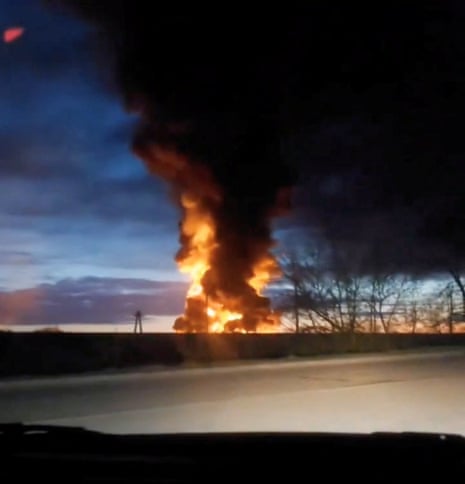
West must boost defence as era of peace in Europe is over, says Ukrainian foreign minister
Dan Sabbagh and Luke Harding report from Kyiv:
Ukraine’s foreign minister has enthusiastically praised US politicians for approving a long-delayed $61bn military aid package for Ukraine, but cautioned that fresh supplies would not immediately turn the tide on the battlefield.
“Hallelujah,” Dmytro Kuleba said when asked for his reaction to Tuesday’s final vote by the US Senate. He said it had been “my belief that we would have a positive outcome”, based in part on the cultivation of religious conservatives, but the west had to “realise the era of peace in Europe is over” and build its defence industry.
Speaking to the Guardian, Kuleba said he was hopeful that the White House would unveil a new package of weapons “within days, maybe hours,” and it was “just a matter of logistics” to get the supplies to the frontline.
Pentagon officials have indicated that some munitions have been already stockpiled in Europe , with artillery and air defences expected to be among the priorities.
Kuleba also said Ukraine had identified seven Patriot air defence systems it could use to protect civilians in major cities outside Kyiv. One had been obtained from Germany, four more had been located and negotiations were taking place, Kuleba said, and two more were in his sights.
Read the full story here .
Russian forces have hit a Ukrainian drone production facility and a Ukrainian army fuel depot, Russia’s defence ministry said today, Reuters reported.
Speaking in Berlin, UK prime minister Rishi Sunak said that “defending our democracy, our democratic processes and institutions is an absolute priority, and we won’t tolerate any activity that undermines that.”
More from the press conference now and UK prime minister Rishi Sunak said Ukraine has the country’s “unwavering support … for as long as it takes”.
Sunak’s comments were made at a joint press conference in Berlin with Germany ’s chancellor, Olaf Scholz .
Scholz told journalists that the US package of support for Ukraine does not free Europe from the obligation to keep helping, Reuters reports.
He also said there was no change to his position on sending Taurus missiles to Ukraine after the US Senate approved $60bn worth of aid to support its war efforts.
Scholz also expressed his desire to work with the UK on the European sky shield.
More details soon …
The UK prime minister, Rishi Sunak , and German Chancellor Olaf Scholz , held a joint press conference in Berlin , in which they discussed funding for Ukraine .
You can watch it back, below:

This handout photograph published on Wednesday on the official Telegram account of the Smolensk regional governor Vasily Anokhin , reportedly shows a firefighter working to extinguish a fire at an oil depot in the Smolensk region.
Ukrainian drones attacked oil facilities in western Russia overnight, defence sources in Kyiv confirmed on Wednesday, according to Agence France-Presse (AFP).
Officials in the western Russian regions of Smolensk and Lipetsk first announced the attacks, blaming Ukrainian unmanned aerial vehicles for starting blazes at energy sites.
“The fire is localised. There is no threat of its spread beyond the facilities,” Smolensk regional governor Vasily Anokhin said in a later post on social media, according to AFP.
He distributed images of first responders in helmets at the scene of the attack dousing flames as plumes of black smoke billowed over the site. No one was wounded or killed, the governor said.
Another drone attack targeted the Lipetsk region farther south, which houses metallurgical and pharmaceutical sites, governor Igor Artamonov said.
A source in the Ukrainian defence sector confirmed to AFP that drones of the Security Service of Ukraine (SBU) had carried out the attacks.
The source made no mention of the attack on Lipetsk but claimed two oil depots were destroyed in the Smolensk region.
“Rosneft lost two storage and pumping bases for fuels and lubricants in the towns of Yartsevo and Rozdorovo,” the source said, referring to the Russian state-controlled energy company.
Russian forces make significant gains in eastern Ukraine
Russian forces have made significant advances in a narrow corridor in eastern Ukraine as an offensive by Moscow to take territory before western military aid arrives appears to be gathering pace.
Footage posted by Kremlin military bloggers shows a Russian tricolour flying above the shattered village of Ocheretyne . Russian troops reportedly entered the territory on Sunday, north-west of the town of Avdiivka , after advancing about 5km in 10 days.
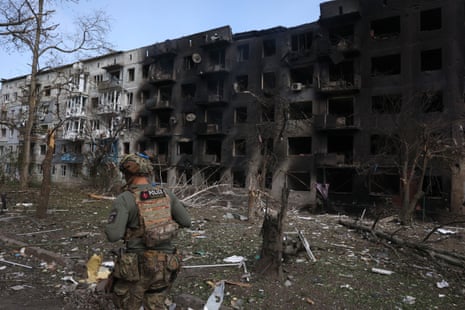
It comes as Ukraine’s foreign ministry said it was suspending consular services for military-age men living abroad, except for those heading back to Ukraine , in a move designed to increase conscription.
The Ukrainian army retreated from Avdiivka in February and has been trying to establish a new defensive line in settlements along the Durna River but in recent weeks reinforced Russian units have been pushing forward , using air-launched glide bombs to pulverise Ukrainian bunkers.
Moscow’s defence ministry claimed Ukrainian troops fled Ocheretyne in small groups and under heavy fire. Video showed a destroyed administration building, with its windows blown out and streets full of debris. Civilians appeared to have left.
You can read more of the report by Luke Harding and Dan Sabbagh in Kyiv here:
According to a report by the Associated Press (AP), the priest who oversaw a memorial service for late Russian opposition leader Alexei Navalny has been suspended for three years by the head of the country’s Orthodox Church .
Dmitry Safronov held a memorial service at Navalny’s gravesite in Moscow on 26 March to mark 40 days since the politician’s death, an important ritual within Russian Orthodox tradition.
The AP reports that an order on the Moscow diocese website demoted Safronov from his position as priest to that of a psalm-reader and stripped him of the right to give blessings or to wear a cassock for the next three years.
According to the news agency, no reason was given for the decision, which was signed by Patriarch Kirill , the head of the Russian Orthodox Church and a key ally of Russian president Vladimir Putin .
Nato drills in Finland are 'provocative', says Russia's foreign ministry
Nato exercises starting on 26 April in Finland and in close proximity to the Russian-Finnish border are provocative in nature, Russian foreign ministry spokesperson, Maria Zakharova , told RIA state news agency in remarks published on Wednesday.
“Nato military exercises near the Russian borders are provocative in nature. Their task is to exert military pressure on the Russian Federation through a demonstration of force,” Zakharova said, reports Reuters.
“The drills … increase the risks of possible military incidents,” added Zakharova.
Russia will expand Ukraine 'buffer zone' if Kyiv gets longer range missiles, says Kremlin
The Kremlin said on Wednesday that Russia would further expand its “buffer zone” inside Ukraine if Kyiv takes delivery of longer-range Atcams missiles from the US that allow it to strike deeper inside Russia, reports Reuters.
The US is preparing a $1bn military aid package for Ukraine, the first to be sourced from the yet to be signed $95bn foreign aid bill, two US officials told Reuters on Tuesday.
When asked about the possibility that the package would include longer-range Atcams missiles, Kremlin spokesperson Dmitry Peskov said Russia’s stance on the subject – that it will be forced to expand what it calls a buffer zone in Ukraine if longer-range missiles are delivered – had not changed.
Kremlin spokesperson Dmitry Peskov on Wednesday dismissed media speculation about the reasons behind the arrest of deputy defence minister Timur Ivanov on bribery charges, and urged reporters to focus on official information, reports Reuters.
Asked about a report that Ivanov was suspected of treason, Peskov said: “There are many different interpretations around all this now.”
“You need to focus on official information,” Peskov said. “It is necessary to focus on the information of the investigative authorities and, ultimately, on the court’s decision.”

Pjotr Sauer is a Russian affairs reporter for the Guardian.
A well-connected Russian deputy defence minister has been charged with bribe-taking, in the highest-profile corruption scandal in the country in years, triggering speculation about a possible purge within Moscow ’s elites.
Timur Ivanov , 47, who was responsible for Russia’s military infrastructure projects, was detained by the FSB services late on Tuesday evening at his work.
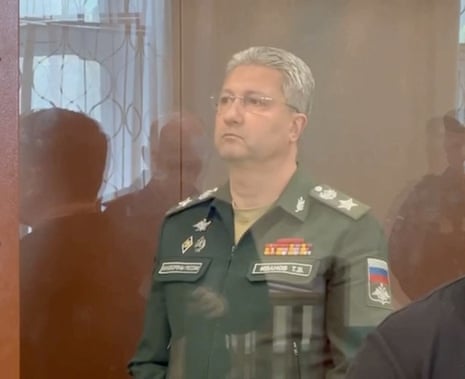
On Wednesday, Ivanov, wearing his military uniform, appeared behind a glass cage in a Moscow court, where he was formally arrested and charged with high bribery. The court remanded him in custody for two months and placed him in the high-security Lefortovo prison in Moscow. He faces 15 years in jail if convicted.
Ivanov was widely seen as a long-term confidant of the powerful defence minister, Sergei Shoigu , having worked with Shoigu across various agencies for more than a decade.
The sudden arrest of an ally of Shoigu, who in turn Putin tasked with fighting the war in Ukraine , sparked speculations about a battle within the elite and of a public crackdown on the corruption that has plagued Russia’s post-Soviet armed forces.
“It is hard to find an official who has done more for Shoigu than Ivanov,” said a former defence official who worked directly with Ivanov, asking for anonymity so they could speak freely.
“This is an attack on Shoigu’s standing. But Shoigu has weathered other storms before.”
The UK has been accused of “helping Russia pay for its war on Ukraine” by continuing to import record amounts of refined oil from countries processing Kremlin fossil fuels.
Government data analysed by the environmental news site Desmog shows that imports of refined oil from India , China and Turkey amounted to £2.2bn in 2023, the same record value as the previous year, up from £434.2m in 2021.
Russia is the largest crude oil supplier to India and China, while Turkey has become one of the biggest importers of Russian oil since the Kremlin launched its invasion of Ukraine in February 2022.
This comes as Russia is increasingly targeting Ukraine’s energy infrastructure, with only a few major power plants not yet damaged or destroyed. UK politicians have been lobbying the US to approve £60bn in military aid for Ukraine, which finally passed on 20 April . The UK foreign secretary, David Cameron , has been advocating for frozen Russian assets to be deployed to Ukraine’s war effort.
In response to the 2022 invasion, allies of Ukraine pledged to divest from Russian oil and gas. The UK officially banned the import of Russian oil products from 5 December 2022. However, a loophole in the legislation has allowed Russian oil to continue to flow into the UK.
You can read the full piece by Sam Bright here:
The Ukrainian online newspaper, the Kyiv Independent , says its sources have told them that Russia ’s state-controlled company Rosneft “lost two storage and pumping bases for fuel and lubricants in Yartsevo and Razdorovo in Smolensk oblast” on Wednesday.

The Kyiv Independent has also shared a screengrab from footage circulating on social media of what was purported to be a burning oil terminal in Yartsevo .
The Guardian could not independently verify the image or footage.
- Ukraine war live
- Volodymyr Zelenskiy
Most viewed

IMAGES
VIDEO
COMMENTS
The SOM (Turkish: Satha Atılan Orta Menzilli Mühimmat) is a next-generation autonomous, stealth, high precision air-launched cruise missile developed by TÜBİTAK SAGE, Defence Research and Development Institute of Turkey. It was first revealed during the 100th anniversary celebrations of the Turkish Air Force at the Çiğli Air Base in İzmir, on 4 June 2011.
Development of the SOM cruise missile began in 2006. The missile was unveiled at the 2nd Air Force Base located in Çiğli, İzmir in June 2011. It has been in service with the Turkish Air Force since 2012 and is certified for integration onto the F-4E 2020 and F-16 Block 40 fighter aircraft.
As for air-launched cruise missiles, SOM is a notable next-generation weapon developed by Türkiye's TÜBİTAK SAGE. Designed to engage targets on land or sea, ...
Discover the capabilities of the SOM series of air-to-surface cruise missiles. With advanced technologies and precision guidance systems, these missiles prov...
Date: Issue 99 - June 2020. Work on the serial production and development of different versions of the Stand-Off Missile (SOM), which has been developed as an air-to-ground/surface cruise missile to meet the requirements of the Turkish Armed Forces and those of friendly and allied nations, continues at full speed. The current members of the SOM ...
The SOM is a next-generation autonomous, stealth, high precision air-launched cruise missile developed by TÜBİTAK SAGE, Defence Research and Development Institute of Turkey. It was first revealed during the 100th anniversary celebrations of the Turkish Air Force at the Çiğli Air Base in İzmir, on 4 June 2011. Developed since 2006, the SOM is Turkey's first domestic guided missile for ...
Stand-Off Missile (SOM) is an air-to-surface Cruise Missile with turbojet engine designed to be used against heavily defended land and sea surface tar. ... SOM-A and SOM-B1 have been in Turkish Air Forces (TurAF) service since 2011. Work for developing other variants, SOM-B2 which has Dual Stage Tandem Penetrating Warhead and SOM-C1 & SOM-C2 ...
New Generation Cruise Missiles SOM Product Family Work on the serial production and development of different versions of the Stand-Off Missile (SOM), which has been developed as an air-to-ground/surface cruise missile to meet the requirements of the Turkish Armed Forces and those of friendly and allied nations, continues at full speed.
By Albert L in Daily News, Missiles, News, Ordnance, Turkey September 10, 2019. On 5 September, the Turkish Minister of Industry and Technology, Mustafa Varank, announced on Twitter the first successful test of the SOM-B2 variant of the SOM cruise missile. The announcement included a video of the successful test, which showed the missile being ...
On June 26, the Azerbaijani Air and Air Defense Force displayed its recently acquired SOM-B1 long-range, high-precision, air-to-surface cruise missile, indigenously manufactured in Turkey. The SOM-B1 is designed for use against high-value, heavily defended targets with a range of over 250 kilometers and is equipped with a conventional 227-kilogram high explosive blast fragmentation warhead. SOM...
Turkish Missiles. The country has developed SOM and ATMACA cruise missiles that can fly at high subsonic speeds. While the SOM is an air-launched missile against land and sea-based targets, the ATMACA is a vessel-borne anti-ship missile.
Çakır is a new generation cruise missile that can be launched from land, sea and air platforms with a range of more than 150 km (93 mi), designed by Turkish rocket and missile manufacturer Roketsan.It was introduced with the launch of Roketsan Ankara Lalahan facilities on 31 March 2022. On the same day, a video about the missile was shared on the Twitter account of Roketsan.
SOM-J is a smaller GPS-guided version of a medium-range conventional cruise missile currently integrated on the Turkish air force F-16 fleet. The weapon incorporates a 500-pound warhead and is capable of striking targets in excess of 100 miles away using terrain-following inertial navigation, and an infrared target seeker, according to the company.
SOM stands for Stand-Off Missile. It has different model variants, SOM-A, SOM-B1, SOM-B2, SOM-J, each for a different purpose High accuracy, great efficiency, reasonable price, suitable for the budget of many countries, cruise missiles are increasingly popular in most wars and conflicts around the world. As for air-launched cruise missiles, SOM is a notable next-generation […]
In addition, as one of the few countries in the world developing cruise missile for the F-35 aircraft, it can be exported to friendly and allied countries". The SOM-J missile is a member of the medium-range, air-to-land ammunition family SOM and was designed to be used against heavily protected land and sea targets.
Turkey's smart cruise missile SOM-J. Stand-Off Missile SOM-J, compatible with 5th generation fighters, was developed in partnership with TÜBİTAK SAGE and Roketsan. SOM-J is designed to be used against heavily protected land and sea targets. With a range of 275 km, SOM-J can be used by F-35 and F-16 jets and can operate in all weather conditions.
The Kale Arge production KTJ-3200, which has terminated Turkey's dependence on the French-made TR40 engine, is expected to be integrated into different cruise missiles in the future. Developed with the experience gained from the KTJ-3200, turbojet engines with higher or less thrust can also be used in missile systems such as SOM-J and Medium ...
Stand-Off Missile [SOM] is an air-to-surface cruise missile fired from beyond the range of air defence systems, and is suited for use against heavily defended land or naval targets deep in the battlefield. ... ROKETSAN is an establishment of Turkish Armed Forces Foundation. Write down the word you are searching for and press "enter". Press "ESC ...
GÖKHAN RamJet Propulsion Air Missile is being developed by TÜBİTAK-SAGE. T0 phase for the GÖKHAN Missile has started and that it can be an effective missile against ballistic targets in the advancing stage. Air-to-ground missiles; SOM Turkey: Air/Land/Ship attack Cruise missile: SOM-A SOM-B1 SOM-B2 SOM-J UMTAS: Air-to-surface guided anti ...
In comparison, the Turkish SOM cruise missile can weigh 500 to 620 kilograms (1,102 to 1,367 pounds), featuring a warhead of 230 kilograms (507 pounds). It has a range of 250 kilometers (155 miles). Tags. Baykar Makina Bayraktar cruise missiles drones Turkey. Inder Singh Bisht May 5, 2023.
In this video we are going to introduce you to one of the most strategic weapons developed by Turkey- the SOM stand-off cruise missile.SOM-A, SOM-B1, SOM-B2 ...
Bakir said that the recent missile attacks between Israel and Iran may be a further rationale to deploy the S-400 in Turkey's east."Such deployment will serve Turkey's security as well as the ...
Turkish, Jordanian and Iraqi officials said Iran gave wide notice days before its drone and missile attack on Israel, but U.S. officials said Tehran did not warn Washington and that it was aiming ...
Japanese Prime Minister Fumio Kishida on Sunday said he "strongly condemns" Iran's missile and drone attack on Israel. "(The attack) further aggravates the current situation in the Middle East.
SOM Cruise Missile ( Turkısh Tomahawk ) - SOM-J is manufactured by TÜBİTAK SAGE and ROKETSAN in Turkey. SOM CRUISE MISSILE Reached 800 KM in Distance Tests...
Iran responded last week by firing a barrage of drones and cruise and ballistic missiles at Israel, almost all of which were shot down by Israel and its allies. ... traveled to Turkey on Saturday ...
In the attack, 185 drones, 36 cruise missiles and 110 surface-to-surface missiles were fired toward Israel, according to Israeli military officials. Most of the launches were from Iran, though a ...
Turkey's first national SOM cruise missile, will enter the inventory of the Azerbaijan Armed Forces.SOM cruise missile would be integrated into the fighter i...
Sunak said "every country has got different things that it can bring to the table" after German chancellor Olaf Scholz said his decision not to deliver Taurus cruise missiles to Kyiv "will ...